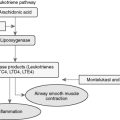CHAPTER 28 Basic Pharmacokinetics
Pharmacokinetics is the study of the rate of movement of drugs within biological systems, or the study of what the body does to the drug, as characterized by drug absorption, distribution, metabolism, and excretion (ADME). It establishes a time course of the drug in the body and helps optimize drug therapy (Figure 28-1).
I. Absorption
B. Drug characteristics that affect absorption
II. Distribution
III. Metabolism
A. The removal of drug from the body by transforming the drug to less-active forms and other compounds
VI. Linear Pharmacokinetics
A. When the area under the curve (AUC) is proportional to the dose, the drug is said to follow linear kinetics. Increases in dosage result in proportional increases in plasma drug levels. Most drugs follow linear pharmacokinetics.
B. At steady state, the rate of drug administered is proportional to the amount of drug eliminated within one dosing interval, and the body reaches an equilibrium or constant serum or blood level.
C. Drugs that have a short half-life, such as gabapentin, reach steady state rapidly; drugs with a longer half-life, such as digoxin, require more time to reach steady state. Half-life is the time required for the body to decrease the amount of drug by half (50%). Generally, it takes 4–5 half-lives for the dosing of the drug to reach steady state.
VII. Nonlinear Pharmacokinetics

Figure 28-1 Concentration and time of drug action.
(Reprinted by permission from Macmillan Publishers Ltd: International Journal of Impotence Research, 19:253-264, Sept. 21, 2006.)
REVIEW QUESTIONS
(Answers and Rationales on page 382.)
4. What does “first pass effect” mean?
5. True or False: A phenytoin serum level does not have to be adjusted when serum albumin is reduced because it is highly protein bound.
8. Amphetamine is a weak base with a pKa of 9.8. The urine of an overdose victim was found to have a pH of 8.0. What percentage of amphetamine would be ionized at this pH, and should the urine be acidified or alkalinized to increase renal clearance?
9. A 64-year-old man has been taking phenytoin for 2 years and has come in for routine blood work. What is his adjusted phenytoin level and should he be given a loading dose to reach therapeutic range? (Height = 5′ 10″, weight = 187 lbs, phenytoin = 7.6 mcg/mL, albumin = 3.1 g/dL, SCr = 1.2 mg/dL)
10. A patient is given a 300-mg bolus of a drug and the initial concentration is determined to be 4.6 mg/L. What is the apparent volume of distribution of this drug in this patient?
11. If a 58-year-old, 176-lb (Height = 74 inches; IBLO = 81 kg) male patient has a serum creatinine of 2 mg/dL. What is the patient’s estimated creatinine clearance?
13. Which of the following steady-state serum phenytoin concentrations is within the therapeutic range?
14. Which of the following lithium levels is within the therapeutic range during initiation of therapy?
15. A patient is referred to a psychiatrist for major affective disorder. Which of the following medications will provide the onset of clinical activity?
22. Which of the following dosing routes would be chosen for limited first-pass effect and extended duration of action?
27. Which of the following dosing routes could be the most painful and can be administered in a depot preparation?
28. Which of the following statements about first-order elimination is/are true?
36. Which of the following statements about elimination half-life is true?
37. Of the following, which strategy would best to minimize adverse drug events in patients with impaired renal function is to:
43. Drug A is given as a rapid, single intravenous (IV) infusion to a 50 kg patient. The volume of distribution (Vd) for drug A is 2 L/kg. What is the predicted initial concentration (Co) in plasma if a 500 mg dose is administered?




